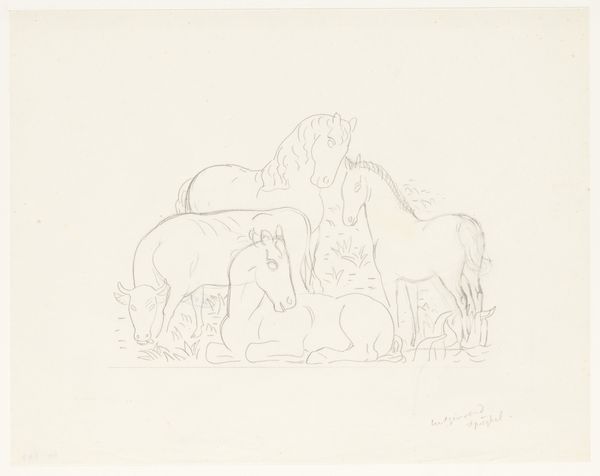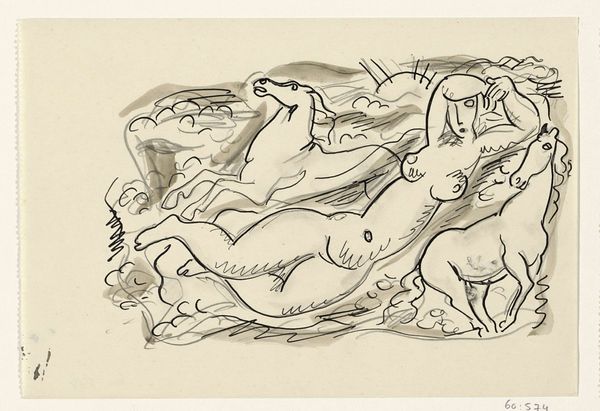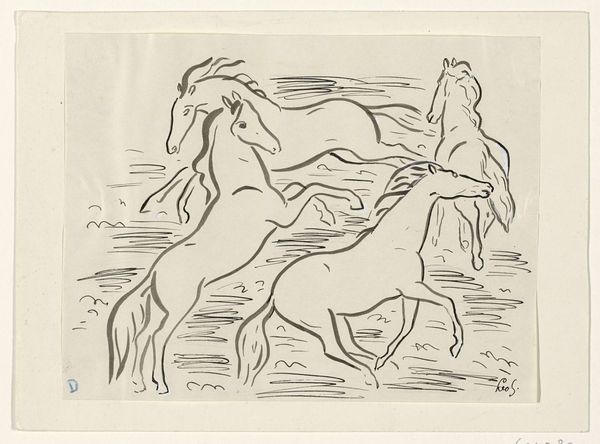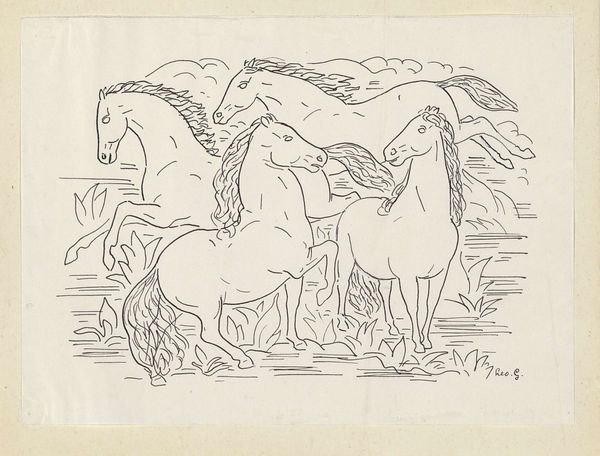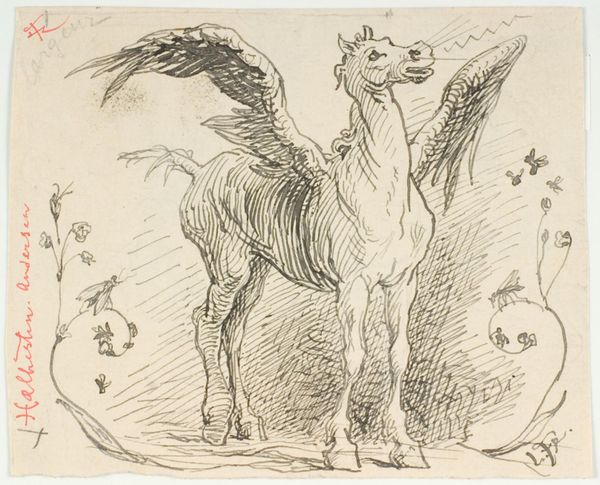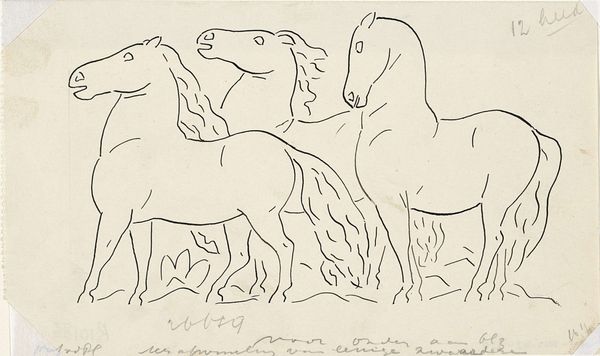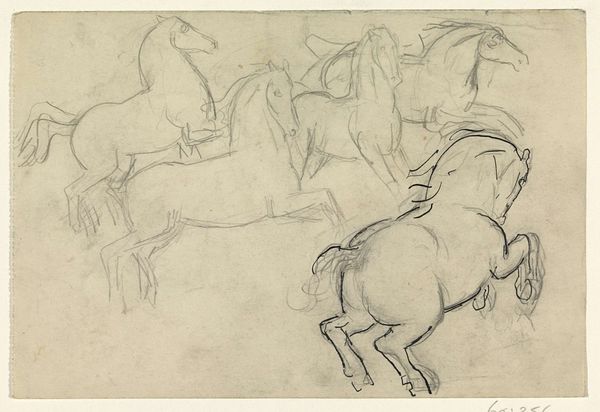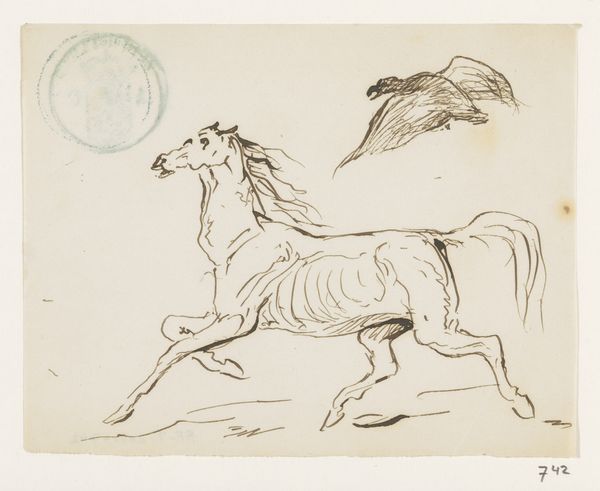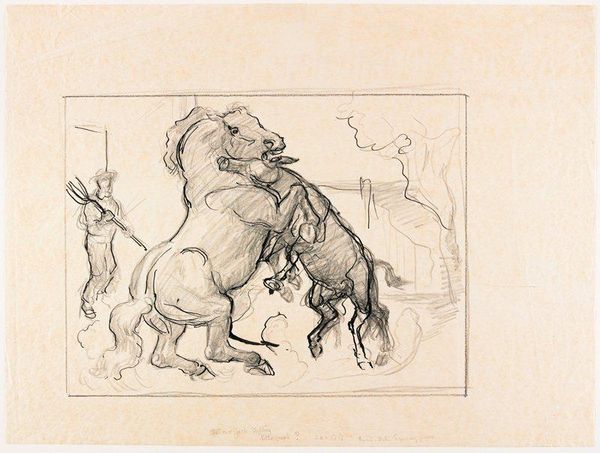
drawing, paper, ink
#
drawing
#
pen illustration
#
paper
#
ink
#
horse
#
sketchbook drawing
#
realism
Dimensions: height 133 mm, width 193 mm
Copyright: Rijks Museum: Open Domain
Editor: So, here we have "Studieblad met acht paarden," a study sheet of eight horses by Leo Gestel, made sometime between 1891 and 1941. It’s an ink drawing on paper, currently housed in the Rijksmuseum. What strikes me is how casual and spontaneous it feels – like a quick glimpse into a stable. What do you make of it? Curator: The interesting thing for me is how the "quick glimpse," as you say, naturalizes equestrian themes. During this period, we see the rise of industrialization altering human relations to animals. Artists are capturing leisure time, the rise of the sporting life, country escapes—things unavailable to vast segments of the population. Are these drawings records of the pastoral idyll or indicators of the shift in class structure at this time? Editor: That's a perspective I hadn't considered! So you’re saying that even a seemingly simple drawing like this can reflect broader social changes? Curator: Precisely! The prevalence of horse imagery, historically tied to aristocracy and power, also needs to be considered in relation to a democratizing art market. Who is consuming these images, and what desires are they fulfilling? Gestel is engaging with these questions, whether intentionally or not, simply by depicting this subject matter. Editor: It’s fascinating to think about how a seemingly simple drawing can be loaded with so much historical context. It’s made me appreciate the piece in a new way, beyond just the aesthetic appeal. Curator: Yes. Paying attention to how cultural and economic forces play out through artistic production helps us appreciate these works as more than just beautiful images, but also documents reflecting how people lived. Editor: Absolutely, I see that now. It's like peeling back layers of history. Thanks for opening my eyes!
Comments
No comments
Be the first to comment and join the conversation on the ultimate creative platform.



